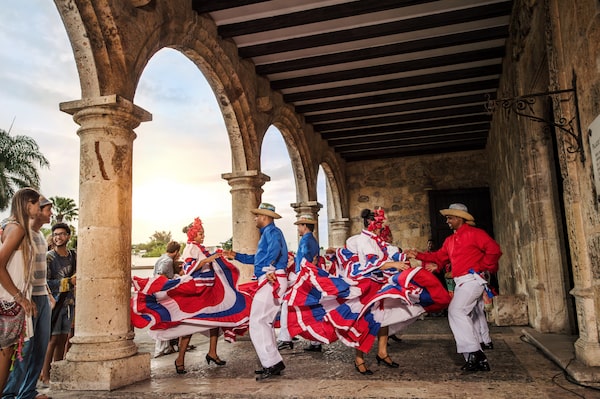
Dancing the bachata in the country of its origin has been on my bucket list for almost a decade.Supplied
Arriving in a sunset-drenched Santo Domingo, I’m enchanted by the lyrical rhythms of bachata music floating from car speakers, corner stores and homes in the Dominican Republic’s cosmopolitan capital city. My guide, Prudencio Ferdinand, is eager to showcase his hometown and have a “true night out” with visitors. “For Dominicans, music is our life,” he says as we walk by a lively band playing in the centre of the city’s Colonial Zone.
Dancing the bachata in the country of its origin has been on my bucket list for almost a decade, ever since I was first introduced to the music and Latin dance style that is rapidly gaining international popularity.
Bachata arose in the majority-poor, working-class areas in the Dominican Republic. Because of these roots, it was censored under Rafael Trujillo, whose dictatorship started in 1930. But after his death in 1961, it flourished in Santo Domingo and beyond, and the sounds and dance stylings became part of the day-to-day life in the Caribbean island.
Alcazar de Colón, Ciudad Colonial, in Santo Domingo.Supplied
Artists such as Romeo Santos, Prince Royce and Juan Luis Guerra have brought bachata to the international market, and it’s now showcased in concerts and dance competitions in North America and Europe. The dance, which is usually done in partners, has been adapted into several distinct variations, but in its original form, bachata is a slower-paced, basic eight-count side-to-side or front-to-back step with swaying hips and room for freestyling. Because of this, it is less intimidating than salsa or merengue, giving it a wider appeal for beginners.
“Bachata is a feeling first, and steps second,” says Kim Ramos, a Dominican-Canadian bachata teacher who started the Toronto dance company Araguacu 10 years ago. “Dance really speaks volumes and connects us to a cultural experience that I feel transcends just taking classes or learning steps.”
I took my first classes when living in New York, at free “social dancing” events where you are welcome to arrive alone and dance the whole night with many different partners. Over the years, bachata has brought me a sense of self-expression and confidence through movement, and I hoped to see it in a new light by visiting the vibrant heartbeat of its country of origin.
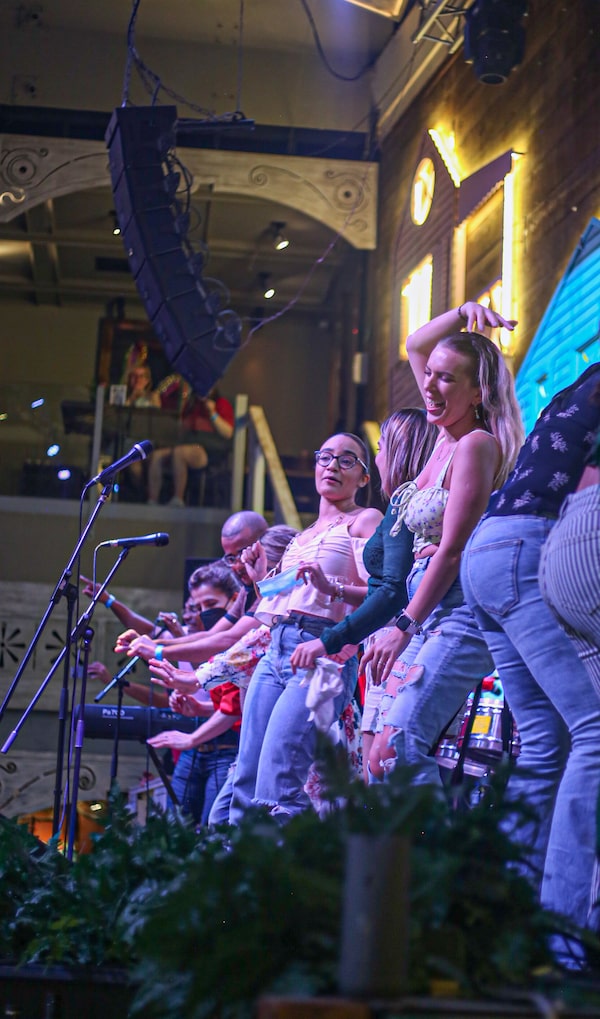
The second stop is a live music venue and restaurant, Jalao.sanchez Family Films/Supplied
Around 9 p.m., I meet up with a group and our guide takes us first to Hasta la Tambora HLT, an ambient open-air venue that could be mistaken for a casual, intimate backyard party if it weren’t for a platform stage in the middle, where an MC keeps the energy up through the night and anybody is welcome to sing karaoke or dance along.
The second stop is a live music venue and restaurant, Jalao. While I’m enjoying a mouth-watering coconut shrimp curry, a salsa and jazz band starts playing, and soon diners become dancers in the verandas, spinning between tables and bars in the airy and spacious spot.
Third on the itinerary is Museo Del Ron, a short walk away. At almost midnight, it looks like the evening is just starting at this bar hidden inside a rum museum. During the day, the space shows the centuries-old process of making rum with sugar cane. And now, surrounded by old vessels, vats, tools, drawings and exposed brick, the dancing crowd seems to exist in another time. As couples move and belt out lyrics, I share a table with musicians playing bongos and a güira (a traditional Dominican percussion instrument).
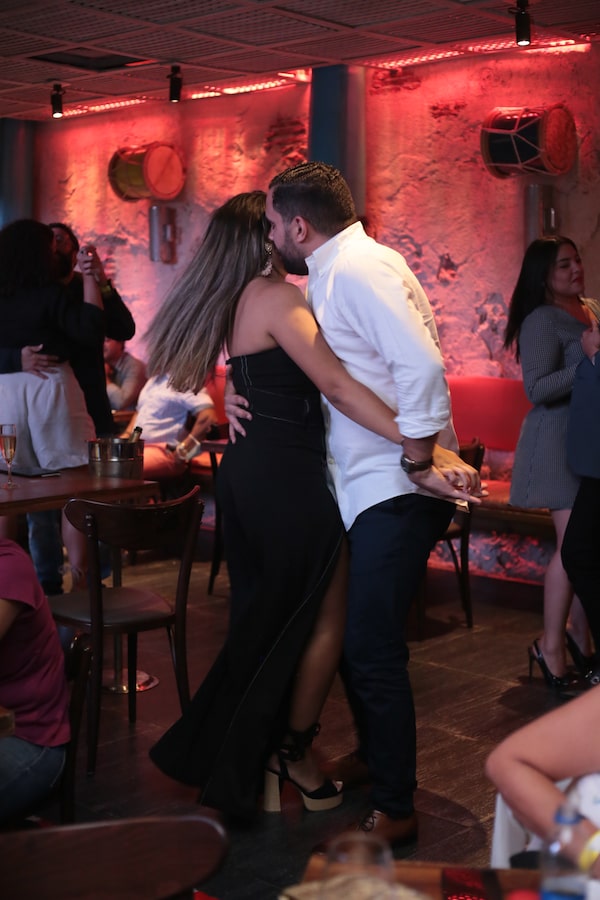
While I’m enjoying a mouth-watering coconut shrimp curry, a salsa and jazz band starts playing, and soon diners become dancers in the verandas, spinning between tables and bars in the airy and spacious spot.sanchez Family Films/Supplied
It doesn’t take long before I’m asked for a dance and whisked away to the floor with a wide smile and swift spins. The ending of every song is followed by a bow and “thank you,” in the etiquette of social dancing. Soon, I’m resting my feet and considering how the sensible choice would be to head back to my hotel. But who knows when I’ll get this chance again?
Mixing with locals and tourists – Italians, New Yorkers and Brazilians – I stay for another two hours, then make the five-minute walk back to Hodelpa Nicolás de Ovando. In the halos of streetlights, I’m buzzing from the excitement, the faint music still echoing in my head.
A sign of a fulfilling travel experience is that it changes you in some way. For the remainder of the trip, I felt refreshed despite a lack of sleep and a non-stop itinerary. It was like dance had unlocked some energy level I didn’t know I had. Now back home, I’ll do anything to bring that joy to my everyday life. Whenever I hear a bachata song, I am transported to the warm Dominican breeze, remembering how a hobby can be a gateway to places and people around the world.
If you go:
Getting there: The Caribbean’s low-fare airline Arajet has new direct flights connecting Toronto and Montreal to Santo Domingo. It also offers a free round-trip bus service between the Santo Domingo airport and Punta Cana (Bella Mare Gift Shop), a trip of less than two hours.
Air Transat has year-round non-stop flights to Punta Cana from Montreal, Toronto and Quebec City. In the winter, they offer non-stop flights to Punta Cana from London, Ont., Hamilton, Ottawa, Halifax and Moncton.
Where to dance: Every Sunday, locals and tourists gather at the ruins of San Francisco Monastery to dance along with a free concert by beloved band Grupo Bonyé.
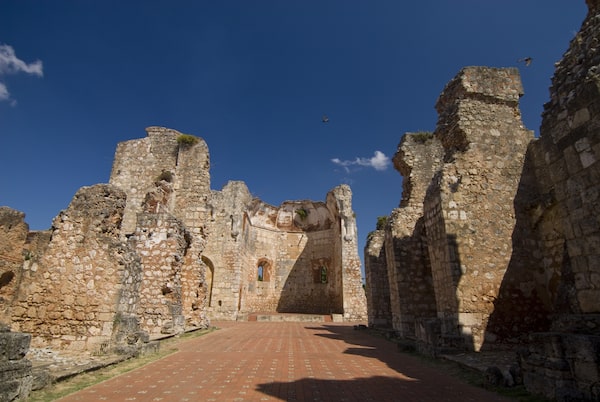
Every Sunday, locals and tourists gather at the ruins of San Francisco Monastery to dance along with a free concert by beloved band Grupo Bonyé.Ian Cumming/Supplied
If you’re looking for a beach experience but don’t want to miss out on dancing, Las Terrenas is a resort town on the Samaná Peninsula and a dance-instructor favourite.
“It’s a hub of local instructors teaching bachata, because it’s an expat community – that’s where I tell my students to go,” Ramos says.
What to see: Santo Domingo is home to many firsts of the Americas, including the first university, city hall and cathedral (Cathedral of Santa María la Menor). If you are low on time, a bike tour with company Zona Bici is one way to cover a lot of ground quickly, with some fun storytelling and honest historical background from an English-speaking guide.
Santo Domingo is home to many firsts of the Americas, including the first university, city hall and cathedral.Supplied
Where to eat: In Santo Domingo, there is a choice of both trendy contemporary restaurants such as Maraca and Buche Perico, or romantic spots such as Pat’e Palo, which claims to be the first tavern in the New World.
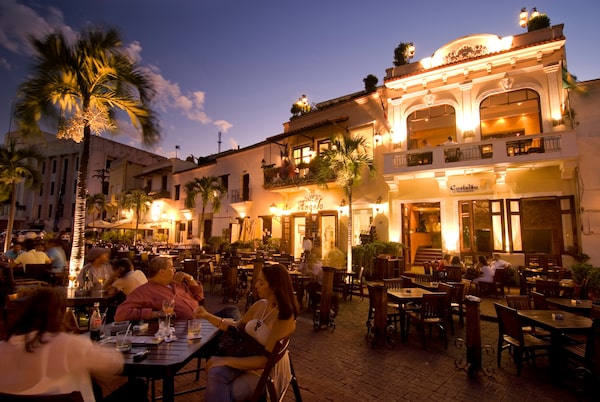
Restaurants in the Plaza Espana at dusk.Ian Cumming/Supplied
The writer was a guest of Dominican Republic Ministry of Tourism. It did not review or approve the story before publication.